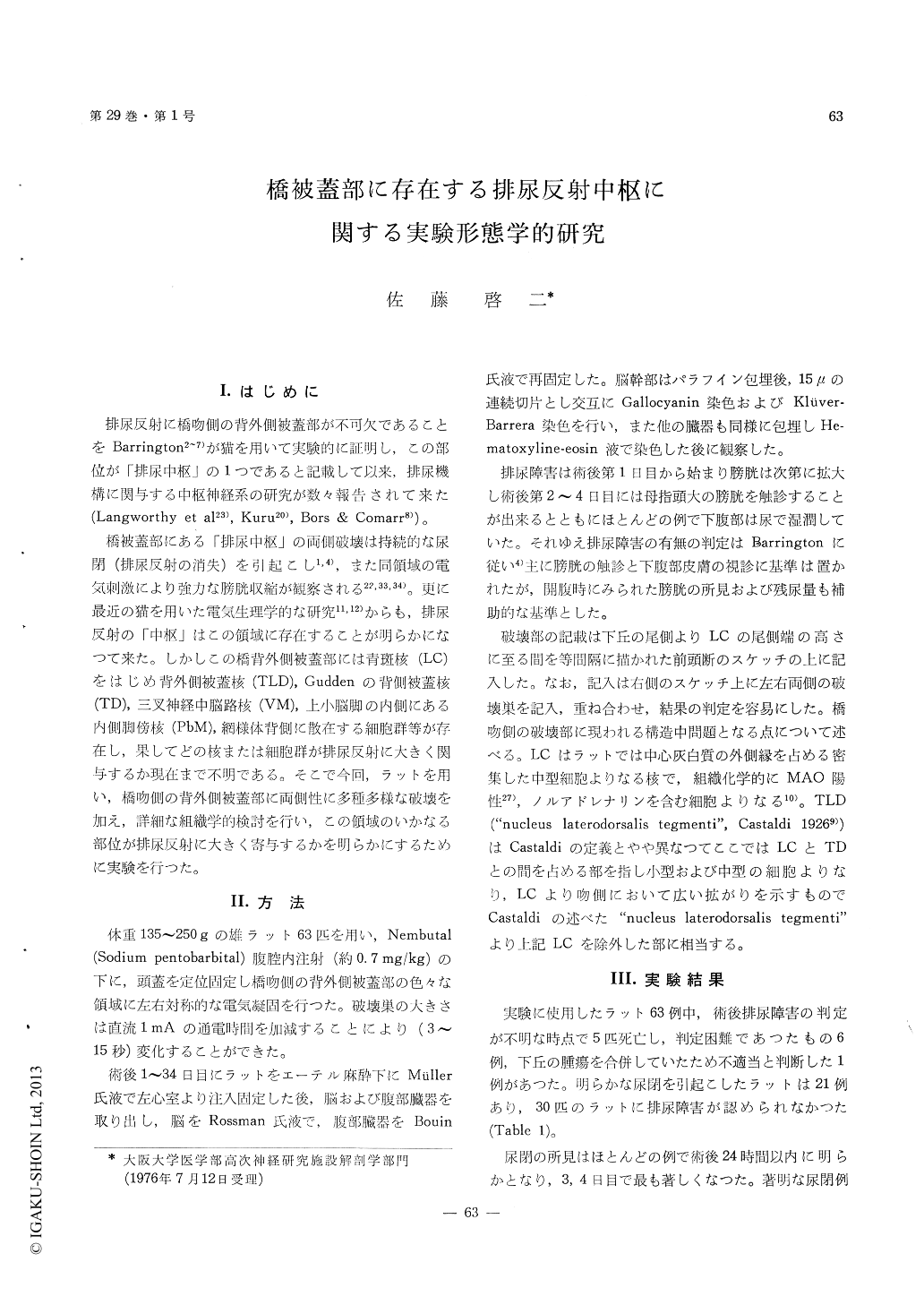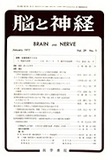Japanese
English
- 有料閲覧
- Abstract 文献概要
- 1ページ目 Look Inside
I.はじめに
排尿反射に橋吻側の背外側被蓋部が不可欠であることをBarrington2〜7)が猫を用いて実験的に証明し,この部位が「排尿中枢」の1つであると記載して以来.排尿機構に関与する中枢神経系の研究が数々報告されて来た(Langworthy et al23),Kuru20),Bors & Comarr8))。
橋被蓋部にある「排尿中枢」の両側破壊は持続的な尿閉(排尿反射の消失)を引起こし1,4),また同領域の電気刺激により強力な膀胱収縮が観察される22,33,34)。更に最近の猫を用いた電気生理学的な研究11,12)からも,排尿反射の「中枢」はこの領域に存在することが明らかになつて来た。しかしこの橋背外側被蓋部には青斑核(LC)をはじめ背外側被蓋核(TLD),Guddenの背側被蓋核(TD),三叉神経中脳路核(VM),上小脳脚の内側にある内側脚傍核(PbM),網様体背側に散在する細胞群等が存在し,果してどの核または細胞群が排尿反射に大きく関与するか現在まで不明である。そこで今回,ラットを用い,橋吻側の背外側被蓋部に両側性に多種多様な破壊を加え,詳細な組織学的検討を行い,この領域のいかなる部位が排尿反射に大きく寄与するかを明らかにするために実験を行つた。
Since the discovery of the pontine micturition reflex center' by Barrington that bilateral de-struction at the dorsolateral tegmentum of the cat resulted in an urinary retention, many electro-physiological and morphological studies concerning the central control of the micturition have been reported (LANGWORTHY et al, '40 ; KURU, '65 ; HORS & COMARR, '71), but the exact location of the 'center' was not confirmed. However, the present study has localized the 'center' to a specific area within the dorsolateral tegmentum, laterocaudal portion of the nucleus laterodorsalis tegmenti (1cTLD).
Various electrolytic lesions have been made in the rat laterodorsal tegmentum, and following the observation of the urinary disorder (urinary re-tention, hematuria), a detailed histological exami-nation of the rostral pons was done. Electrodes were placed at the various neuroanatomical structures within the laterodorsal tegmentum, where locus coeruleus (LC), nucleus laterodorsalis tegmenti (TLD), nucleus tegmentalis dorsalis (Gudden, TD), nucleus tractus mesencephalici n. trigemini (VM), nucleus parabrachialis medialis (PbM), and group of cells in the dorsolateral reticular formation (SC) are located. Relatively large lesions in the latero-dorsal tegmentum of the rostral pons, including LC and TLD in the lesion, were always followed by the urinary retention. Small lesions which centered at LC, anterior portion of TLD, PbM or SC failed to present any urinary disorder in many cases, but when these lesions extended to the 1cTLD which is located just anterior to LC the urinary retention occurred. A prominent urinary disorder was observed after a focal lesion in IcTLD, leaving the neighboring region relatively intact. It should be stressed that any lesion involving the 1cTLD bilaterally could cause the urinary retention, and that the lesion common to all the cases with urinary disorder was only the 1cTLD. In conclusion, the 'micturition reflex center' at the rostral pons is localized at the 1cTLD, and the bilateral destruction of this 'center' caused the urinary disorder in the rat.

Copyright © 1977, Igaku-Shoin Ltd. All rights reserved.


